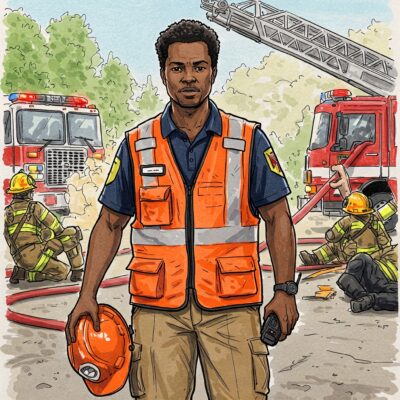EMTs and paramedics are first responders who provide life-saving medical care in emergency situations. They assess patients, perform critical interventions, and transport individuals to healthcare facilities.
What is a typical day in Emergency Medical Services?
– Responding to emergency calls, such as accidents or medical crises
– Stabilizing patients using techniques like CPR, wound dressing, or airway management
– Transporting patients safely to hospitals or trauma centers
– Documenting patient conditions and treatments provided during emergencies.
What else might they be expected to do?
– Educate the public on first aid and emergency preparedness
– Maintain and restock medical equipment in ambulances
– Assist with disaster response efforts in mass casualty situations
What type of training is needed for this career path?
– A diploma or certificate in Emergency Medical Services (EMS), typically lasting 6 months to 2 years.
– Advanced training and certification for paramedics, which includes additional skills like administering medications and performing advanced airway procedures.
– Registration with regulatory bodies, such as the Kenya Council of Emergency Medical Technicians.
What kind of personality is needed to excel in this career path?
– Calm, resilient, and quick-thinking individuals excel in this role.
– Big 5 traits: Emotional Stability and Conscientiousness.
– Myers-Briggs types: ISTP or ESTP often align with this career.
What kind of interests do people in this career path have?
– Passion for helping others in critical situations (Social and Realistic traits).
– Interest in adrenaline-driven, hands-on medical work.
– Interests & Aptitude: Realistic (R), Social (S), and Investigative (I)
Are there any innate skills or aptitudes required?
– Strong physical stamina and the ability to work in high-pressure situations
– Quick decision-making and problem-solving skills
– Ability to remain calm and focused during emergencies
What challenges can I expect to face if I pursue this career path?
– Exposure to traumatic or life-threatening situations
– Irregular working hours, including nights, weekends, and holidays
– Emotional stress from dealing with critically ill or injured patients
What are the job prospects for this path in Kenya and Africa? What about International prospects for a Kenyan citizen?
– Kenya and Africa: EMTs and paramedics are increasingly needed as pre-hospital care systems develop. Opportunities exist in private ambulance services, hospitals, and disaster response agencies.
– International: EMTs and paramedics are in demand globally, particularly in countries with advanced EMS systems like the USA, UK, and Australia. Kenyan professionals may need to complete additional certifications to work abroad.
What should I focus on if I choose to pursue this career?
– Develop strong skills in first aid, trauma care, and emergency response.
– Gain practical experience through internships or ride-alongs with ambulance teams.
– Stay updated on advancements in emergency medical technologies and protocols.
Which other careers or job roles can I progress to?
– Paramedic Supervisor
– Emergency Department Technician
– Flight Paramedic
– Disaster Response Coordinator
– Educator in Emergency Medical Services

